How Do 3D Digital Billboards Work?
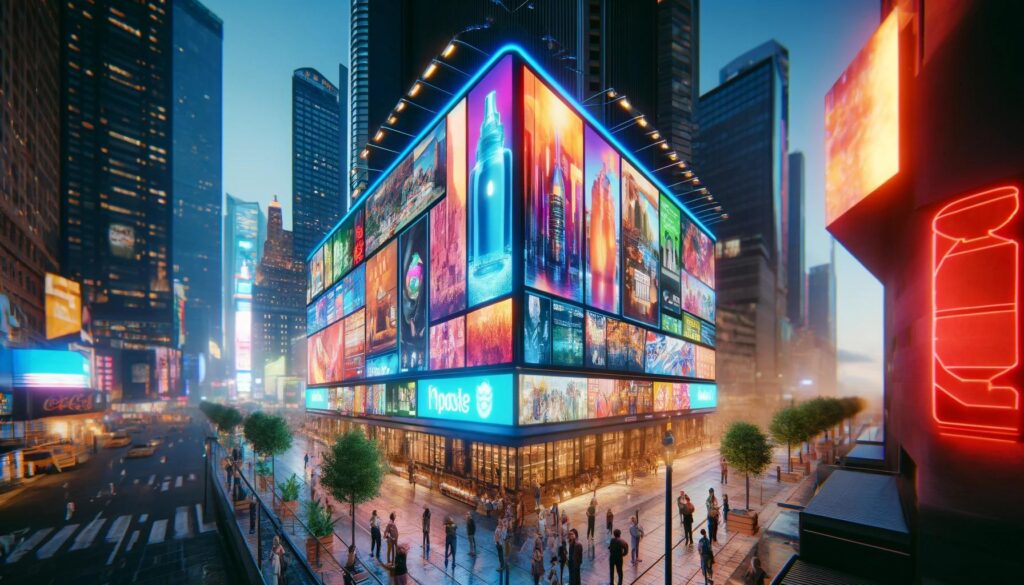
Table of Contents
| Subject Title | Subject Description |
|---|---|
| Introduction to 3D Billboards | Overview of the transformative impact of 3D billboards in outdoor advertising, emphasizing their dynamic video and animation features. |
| Exploring the Various Types of 3D Billboards | Detailed exploration of different 3D billboard technologies: Lenticular Billboards, LED Digital Billboards, Projection Mapping. |
| Understanding 3D OOH and 3D DOOH: A Terminology Guide | Explanation of key terms like 3D OOH (Out-of-Home) and 3D DOOH (Digital Out-of-Home), and their implications in modern advertising. |
| The Advantages of 3D Digital Billboards Over Traditional 3D Billboards | Discussion on the superiority of digital 3D billboards due to their dynamic content, interactivity, measurable impact, and cost-effectiveness. |
| Exploring Applications of 3D Digital Billboards | Application of 3D digital billboards across various sectors including government facilities, luxury hotels, and corporate offices among others. |
| Strategies for Planning a 3D Digital Billboard Campaign | Key strategies for impactful 3D billboard campaigns, including storyboarding and visualizing content for maximum impact. |
| Initiating and Optimizing a 3D Digital Billboard Campaign | Guidelines on launching, monitoring, and optimizing a 3D digital billboard campaign, including securing ad space and implementing effective marketing strategies. |
| Technology Behind 3D Billboards | In-depth look at the hardware components like LED panels and sensors, and software innovations that drive 3D billboards. |
| Benefits of 3D Billboards | Exploration of the benefits such as enhanced viewer engagement, memorable brand experiences, and targeted advertising capabilities. |
| Challenges and Considerations | Discussion of challenges such as higher costs, regulatory hurdles, and ethical implications of 3D billboards in public spaces. |
| Emerging Trends in 3D Digital Billboard Advertising | Insight into the future trends like VR/AR integration, AI’s impact on personalization, and sustainable development in billboard operations. |
| FAQs | Answers to frequently asked questions about 3D billboards, including costs, construction, benefits, locations, and terminology. |
Introduction to 3D Digital Billboards
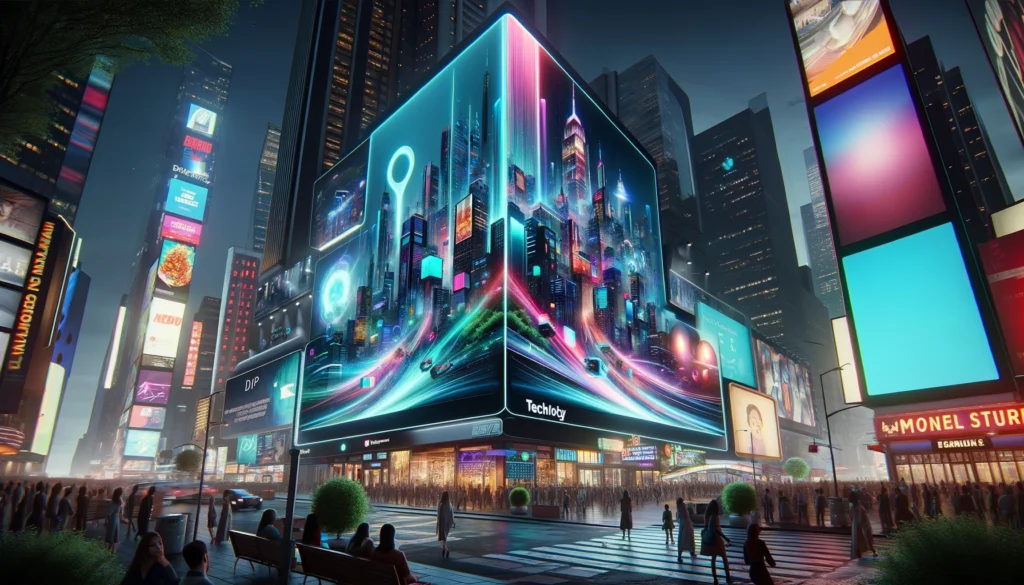
3D billboards represent the next evolutionary step in outdoor advertising, blending cutting-edge technology with creative marketing to capture the attention of a diverse audience.
Unlike traditional billboards, which are static and two-dimensional, 3D billboards use dynamic video and animation to create an illusion of depth and movement, potentially incorporating real-world interactions with passersby. This makes them not just advertisements but attractions in their own right.
Exploring the Various Types of 3D Billboards
3D billboards come in several forms, each employing different technologies to capture audience attention through the illusion of depth and motion. Here’s a closer look at the main types:
- Lenticular Billboards: These billboards use lenticular printing to create depth and movement effects as viewers change their angle of view. This technology is great for simple animations like flipping images or morphing visuals.
- LED Digital Billboards: Utilizing high-resolution LEDs, these billboards display detailed 3D animations that can change in real-time. They are particularly effective in high-traffic areas due to their brightness and visibility in various lighting conditions.
- Projection Mapping: This type involves projecting video onto irregularly shaped surfaces, turning buildings or even small sculptures into dynamic 3D displays. It’s especially popular during events or in permanent installations at theme parks and other attractions.
Understanding 3D OOH and 3D DOOH: A Terminology Guide
The terminology around 3D billboards can be confusing, especially when distinguishing between traditional and digital formats:
- 3D OOH (Out-of-Home): Refers to any outdoor advertising that incorporates three-dimensional creative designs. These are typically non-digital and use physical depth or optical illusions created through materials like foam or special prints.
- 3D DOOH (Digital Out-of-Home): Represents the digital counterpart, which uses screens to display 3D visuals. These billboards leverage technology to render live animations and interactive content that can change based on viewer engagement or other triggers like weather conditions and time of day.
Examples of Digital Billboards
The Advantages of 3D Digital Billboards Over Traditional 3D Billboards
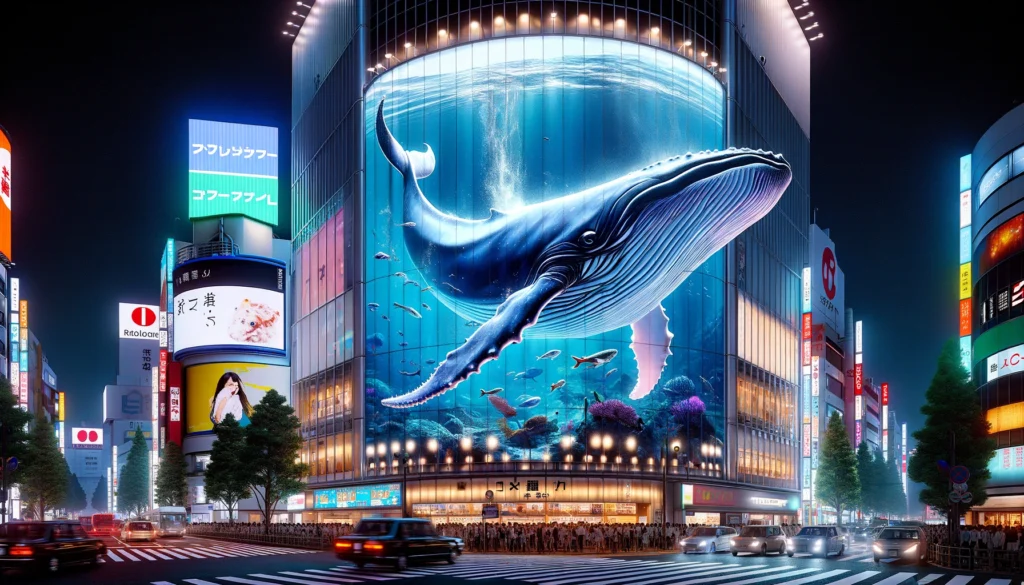
Choosing between traditional and digital 3D billboards often comes down to the specific needs of the advertising campaign, but digital options generally offer several distinct advantages:
- Dynamic Content: Digital 3D billboards can quickly adapt their content, making them ideal for time-sensitive advertising and allowing for frequent updates without physical alterations to the billboard structure.
- Interactivity: With the integration of sensors and real-time data processing, digital billboards can interact with the audience, offering personalized advertising experiences that increase engagement.
- Measurable Impact: Digital systems can track engagement metrics much more effectively than traditional billboards, providing advertisers with valuable data on viewer interactions, impressions, and conversion rates.
- Cost-Effectiveness in the Long Run: Although the initial setup for a digital 3D billboard might be higher than for a traditional one, the ease of updating and maintaining digital content can lead to lower costs over time, especially for long-term campaigns.
These technological advancements make 3D digital billboards a compelling choice for modern advertisers looking to make a significant impact in crowded and competitive urban environments.
Exploring Applications of 3D Digital Billboards
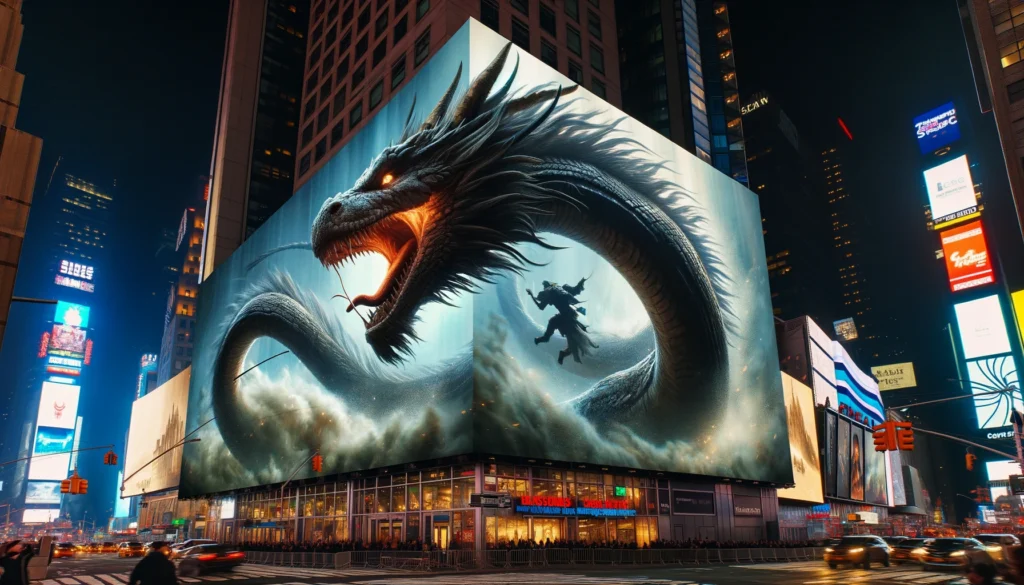
3D digital billboards offer versatile applications across various sectors, leveraging their dynamic content and interactivity to enhance communication and engagement. Here are some key areas where these innovative displays are making a significant impact:
- Government Facilities and Public Service Areas: Utilized for public announcements, emergency information dissemination, and community engagement initiatives. 3D visuals help capture attention and convey important messages more effectively.
- Luxury Hotels and Premier Hospitality Venues: Employed to enhance the ambiance and provide guests with interactive information about services and amenities. These billboards can also feature local attractions or events, enhancing the guest experience.
- Corporate Offices and Business Settings: Used in corporate environments to display dynamic company news, stock market updates, or motivational content that boosts employee engagement and brand identity.
- Airports and Railway Stations: Ideal for displaying flight and train schedules, promotional content, and directions, all while providing engaging visuals that can reduce perceived wait times and improve traveler experiences.
- Museums, Theme Parks, and Cultural Centers: These venues use 3D billboards to create immersive educational experiences or advertise upcoming exhibits and events, enhancing visitor engagement and learning.
- Retail Outlets and Shopping Malls: Strategically placed 3D billboards can drive sales by promoting products in eye-catching ways and guiding customers to special offers or store locations within a mall.
- Exhibition and Convention Centers: Employ 3D billboards to guide attendees to various sections, highlight schedules, and showcase information about exhibitors or speakers, improving navigation and attendee experience.
- Residential and Commercial Real Estate: Real estate agents and developers use 3D billboards to visually present properties, offering potential buyers a lifelike experience of the property without them needing to visit in person.
- Educational Institutions and Universities: Utilized to communicate campus news, events, and student achievements in a way that engages students and visitors alike, fostering a dynamic campus environment.
- Healthcare Facilities and Hospitals: These billboards are used to provide health tips, way-finding assistance within the facility, and important visitor information, all while alleviating the stress of hospital visits with calming, engaging visuals.
Each of these applications not only showcases the versatility of 3D digital billboards but also highlights their potential to transform public spaces into more interactive, informative, and engaging environments.
Strategies for Planning a 3D Digital Billboard Campaign
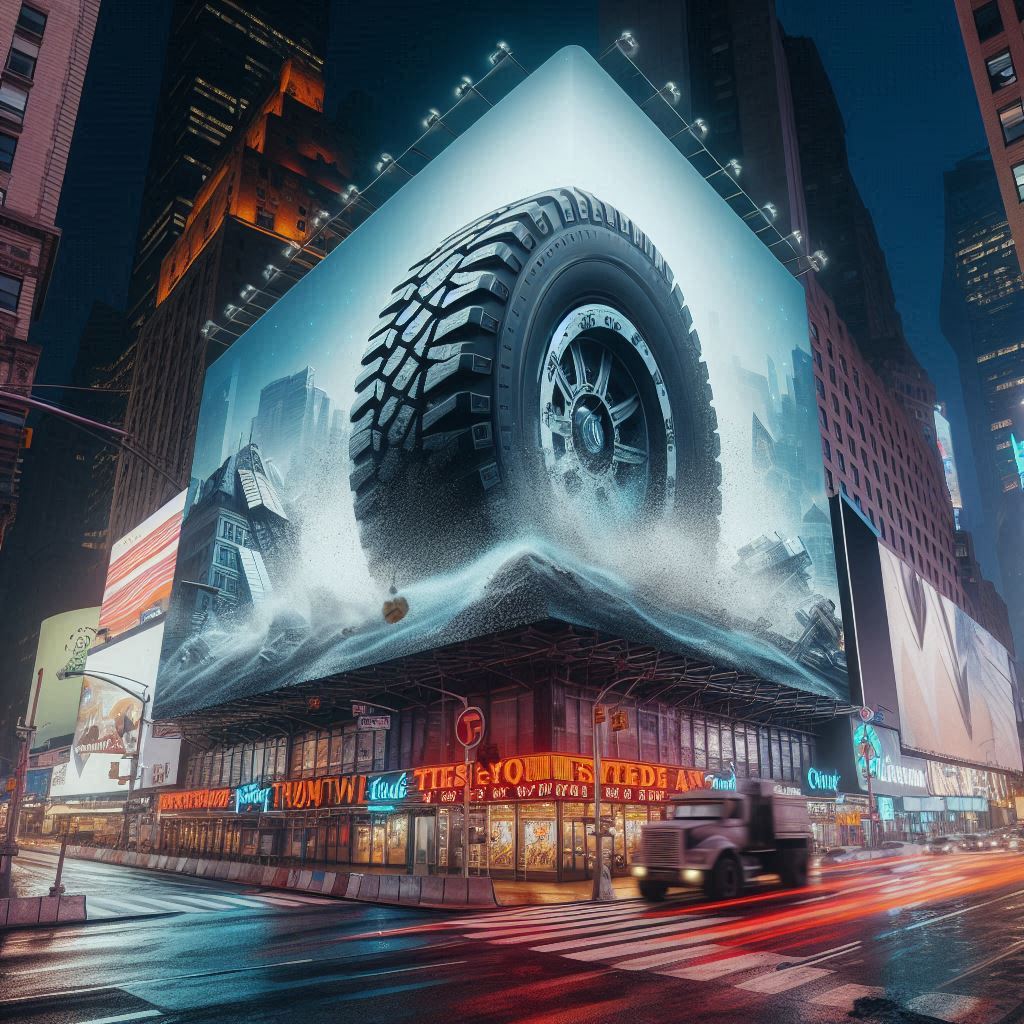
Successful 3D digital billboard campaigns require strategic planning and creative execution. Here are key strategies to ensure your campaign makes a lasting impact:
- Storyboarding and Visualizing Content for Impact: Begin with detailed storyboards that outline the visual and narrative flow of the billboard content. Visualization is crucial in 3D digital campaigns, as it helps predict viewer reactions and refine the impact of the content before it goes live. This step ensures that all elements, from imagery to text, work harmoniously to capture and hold attention.
- Choosing the Right Format for 3D Digital Billboard Creatives: Depending on the campaign goals and the target audience, select the most effective format. Whether it’s high-motion video for high-energy products or interactive displays for engaging customer experiences, choosing the right type of content can dramatically influence the effectiveness of your campaign.
- Understanding Technical Specifications for 3D Billboards: Familiarize yourself with the technical limitations and capabilities of the billboard technology at your disposal. Consider factors like screen resolution, aspect ratio, optimal viewing distances, and environmental influences (such as sunlight or weather conditions) that may affect visibility and performance.
- Collaborating Effectively with Your 3D Billboard Design Team: Maintain clear and continuous communication with your design team. Ensure they fully understand the campaign’s objectives and your brand’s identity. Collaboration should be iterative, with regular updates and feedback sessions to fine-tune designs and animations.
- Integrating Interactive Features in 3D Billboard Designs: To further engage your audience, incorporate interactive elements such as touchscreens, motion sensors, or augmented reality overlays that respond to viewer actions. These features can create memorable experiences and stronger connections between the brand and its audience.
- Monitoring and Adapting to Audience Engagement: Once the campaign is live, use analytics tools to monitor how viewers interact with the billboard. Track metrics such as viewing time and interaction rates to gauge effectiveness. Be prepared to adapt content based on this feedback to optimize engagement and achieve better results.
By applying these strategies, marketers can craft 3D digital billboard campaigns that not only captivate audiences but also deliver measurable results, ensuring that each campaign leverages the full potential of this innovative advertising medium.
Initiating and Optimizing a 3D Digital Billboard Campaign
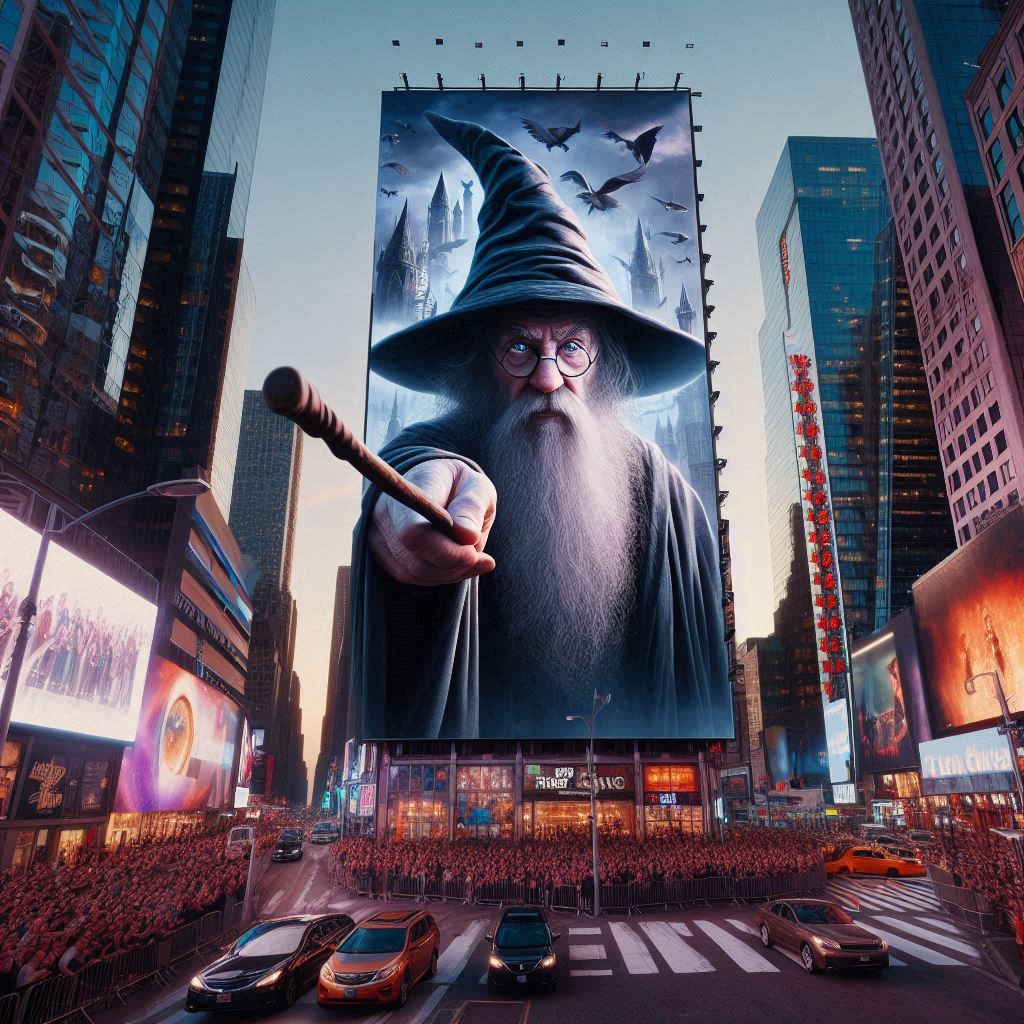
Running a successful 3D digital billboard campaign involves several crucial steps, from securing the right space to continuously optimizing for maximum impact. Here’s how to effectively initiate and optimize your campaign:
- Securing Ad Space for Your Campaign: Start by identifying and securing the best ad spaces for your 3D billboard. This involves researching high-traffic locations that align with your target demographic. Consider the visibility and accessibility of the location to ensure maximum exposure for your advertisement.
- Implementing Effective 3D Marketing Strategies: Develop marketing strategies that leverage the unique capabilities of 3D digital billboards. This could include using eye-catching 3D effects, interactive elements, or time-sensitive messages that encourage immediate viewer response. Tailor your content to fit the billboard’s location and viewer demographics to increase relevance and engagement.
- Launching and Monitoring Your Campaign in Real-Time: After launching your campaign, monitor its performance in real-time. Utilize digital tools to track engagement and viewer interactions. Real-time monitoring allows for quick adjustments and troubleshooting, ensuring the content performs as intended and continues to engage viewers.
- Optimizing and Refining Campaign Performance: Based on the data collected, make necessary adjustments to enhance the campaign’s effectiveness. This may involve tweaking the visuals, adjusting the timing of the content, or refining the message. Continuous optimization helps in maintaining viewer interest and maximizing the impact of your advertisement.
- Analyzing Campaign Metrics for Insightful Feedback: Collect and analyze detailed metrics from your campaign to gain insights into its success and areas for improvement. Metrics such as viewer dwell time, interaction rates, and conversion data can provide valuable feedback for future campaigns, helping to refine strategies and content.
- Enhancing Visibility and Engagement Through Strategic Placement: Assess the placement of your 3D billboard to maximize visibility and engagement. Consider factors like the angle of approach, surrounding distractions, and the speed at which potential viewers might be passing by. Strategic placement is key to ensuring your billboard not only attracts attention but also delivers the message effectively to as many viewers as possible.
By meticulously planning and continuously refining your approach, you can maximize the impact of your 3D digital billboard campaign, ensuring it not only captures attention but also delivers tangible results.
Technology Behind 3D Billboards
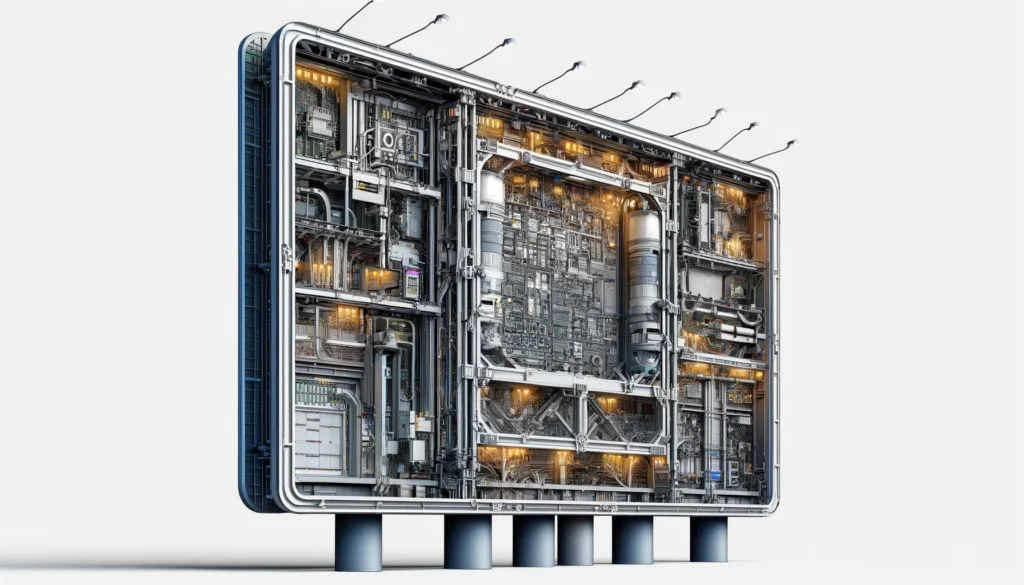
Hardware Components
The effectiveness of 3D billboards largely depends on the sophistication and quality of their hardware components. Here’s a closer look at the critical hardware used:
- High-Resolution LED Panels: These panels are the backbone of digital 3D billboards, providing the clarity and brightness necessary for detailed and vivid imagery. With resolutions continually increasing, these LED panels allow for sharper and more engaging visuals that can be seen clearly from various distances and angles.
- Sophisticated Sensors: Sensors play a crucial role in enhancing the interactivity of 3D billboards. They can track viewer engagement metrics such as the number of people watching, their attention span, and their proximity to the billboard. This data is invaluable for adjusting content dynamically to maintain viewer interest.
- Lenticular Lenses: As mentioned previously for billboards using lenticular printing, these lenses create a 3D effect by allowing the eyes to view alternating sections of multiple images from different angles, creating the illusion of depth.
- Advanced Projection Techniques: These techniques involve projecting images onto non-flat surfaces, enabling 3D billboards to utilize structures of various shapes and sizes as display surfaces. This adaptability allows for creative placements and designs that stand out in urban environments.
Software Innovations
The software that drives 3D billboards is just as important as the hardware. It manages the rendering of images and the overall operation of the billboard. Key features of this software include:
- 3D Rendering Algorithms: These complex algorithms are designed to generate lifelike three-dimensional images from two-dimensional digital content. They handle the processing of depth cues within visuals to ensure that the 3D effect is both realistic and visually appealing.
- Real-Time Adaptation: Modern 3D billboard software can adjust the displayed content in real-time based on various inputs. For instance, it can change the content based on the time of day, weather conditions, and even the demographics of the audience currently viewing the billboard. This level of adaptability ensures that the content is always relevant and engaging.
- Interactive Features: The software can also support interactive elements within the billboard. By integrating with real-time data and sensors, it can trigger specific actions or content changes when viewers engage in certain ways, such as approaching the billboard or performing specific gestures.
Together, the sophisticated hardware and innovative software of 3D billboards create a dynamic and immersive advertising medium that can capture and retain consumer attention far more effectively than traditional advertising methods.
Benefits of 3D Billboards
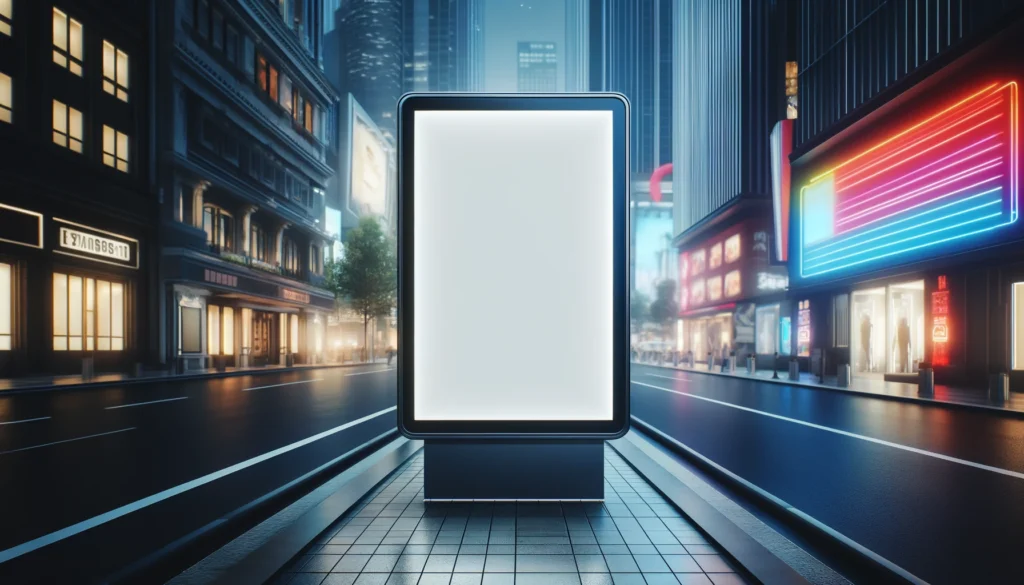
3D billboards provide a multitude of advantages that significantly enhance outdoor advertising strategies. Here’s an in-depth look at these benefits:
- Enhanced Viewer Engagement: The dynamic and immersive nature of 3D billboards captures the attention of passersby much more effectively than traditional billboards. With lifelike animated videos and eye-catching video content, these billboards engage viewers on a deeper level, leading to increased retention of the advertised message and a stronger emotional connection to the brand.
- Memorable Brand Experiences: By employing 3D technology, advertisers can create unique and memorable experiences that stand out in a crowded advertising landscape. This distinctiveness helps reinforce brand recognition and can significantly boost brand loyalty by leaving a lasting impression on the audience.
- Instant Content Updates: Digital 3D billboards offer unparalleled flexibility when it comes to content management. Advertisers can update their messages in real-time from remote locations, allowing them to respond quickly to changes in marketing strategies or external conditions. This agility ensures that the content remains relevant and timely, which is crucial in today’s fast-paced market environments.
- Cost-Effectiveness: Although the initial setup cost for a 3D billboard might be higher than that of traditional billboards, the long-term benefits outweigh this initial investment. The ability to update content remotely without the need for physical replacements or manual labor reduces ongoing operational costs. Additionally, the increased effectiveness of 3D advertisements can lead to higher returns on investment, making them a cost-effective option in the long run.
- Targeted Advertising Capabilities: With advancements in sensor technology and data analytics, 3D billboards can tailor content based on real-time audience data. This capability allows for more targeted advertising, adjusting displayed content to match the demographics and behaviors of nearby viewers, thereby increasing the relevance and effectiveness of marketing messages.
Overall, the benefits of 3D billboards—ranging from their ability to engage and captivate audiences to their operational efficiencies—make them a powerful tool in modern advertising strategies. These advantages not only enhance the visibility of advertising campaigns but also drive greater consumer response, making 3D billboards an increasingly popular choice among marketers.
Challenges and Considerations of 3D Billboards
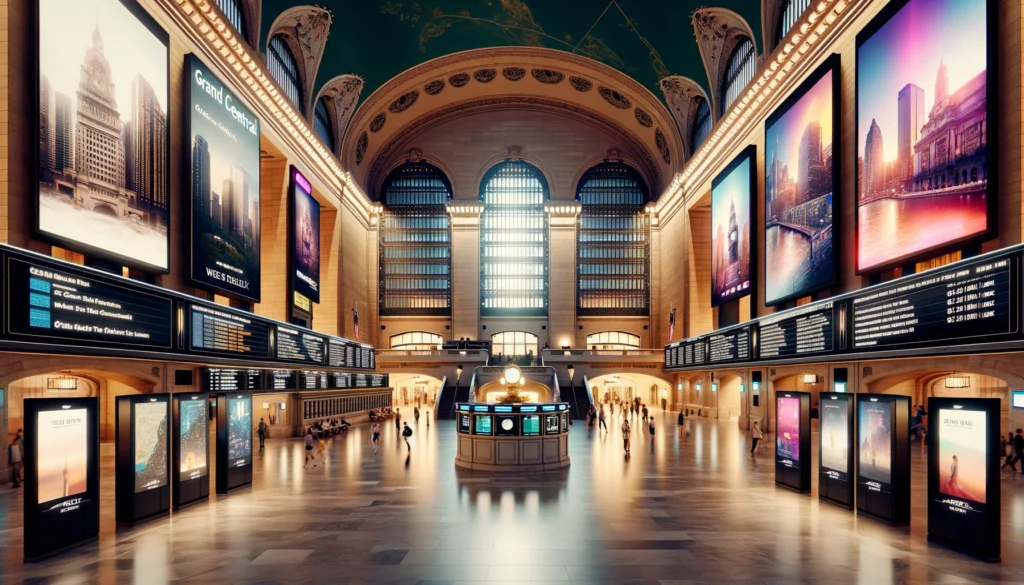
Despite their numerous benefits, 3D billboards also present several challenges and considerations that advertisers must navigate:
- Higher Initial Costs: Implementing 3D billboards involves significant upfront investments in both hardware and software. The costs of high-resolution LED panels, advanced sensors, and the development of high-quality 3D content can be substantial. This financial barrier may be prohibitive for smaller businesses or those with limited advertising budgets.
- Need for Frequent Updates: To maintain the effectiveness and relevance of 3D billboards, the content must be updated regularly. This requires ongoing creative input and technical support, which can increase operational costs and necessitate a sustained commitment of resources.
- Regulatory Hurdles: 3D billboards are subject to various local, regional, and national regulations, which can affect where and how these billboards are installed and operated. Compliance with these regulations can add complexity and potential delays to the deployment of new billboards, particularly in areas with strict advertising or zoning laws.
- Environmental Impact: The energy consumption associated with powering 3D billboards, especially those that operate around the clock, can be significant. Additionally, the electronic waste generated by outdated or malfunctioning components is a concern. Advertisers need to consider these environmental factors and explore sustainable practices, such as using energy-efficient technologies and recycling components where possible.
- Ethical Implications: The use of highly engaging and sometimes intrusive 3D visuals raises ethical questions about the impact on public spaces and the general public. There is a fine line between capturing attention and overwhelming or distracting viewers, which can be particularly concerning in high-traffic or sensitive areas. Advertisers must carefully consider the content and placement of 3D billboards to avoid backlash and maintain public goodwill.
- Safety Concerns: Particularly in traffic-heavy locations, the compelling nature of 3D visuals might pose safety risks by potentially distracting drivers or pedestrians. Ensuring that these billboards are designed and placed in a manner that minimizes such risks is crucial for public safety and the long-term success of the advertising strategy.
Navigating these challenges requires careful planning, ethical consideration, and a proactive approach to regulatory and environmental issues. By addressing these factors, advertisers can maximize the impact of their 3D billboard campaigns while mitigating potential negative consequences.
Emerging Trends in 3D Digital Billboard Advertising
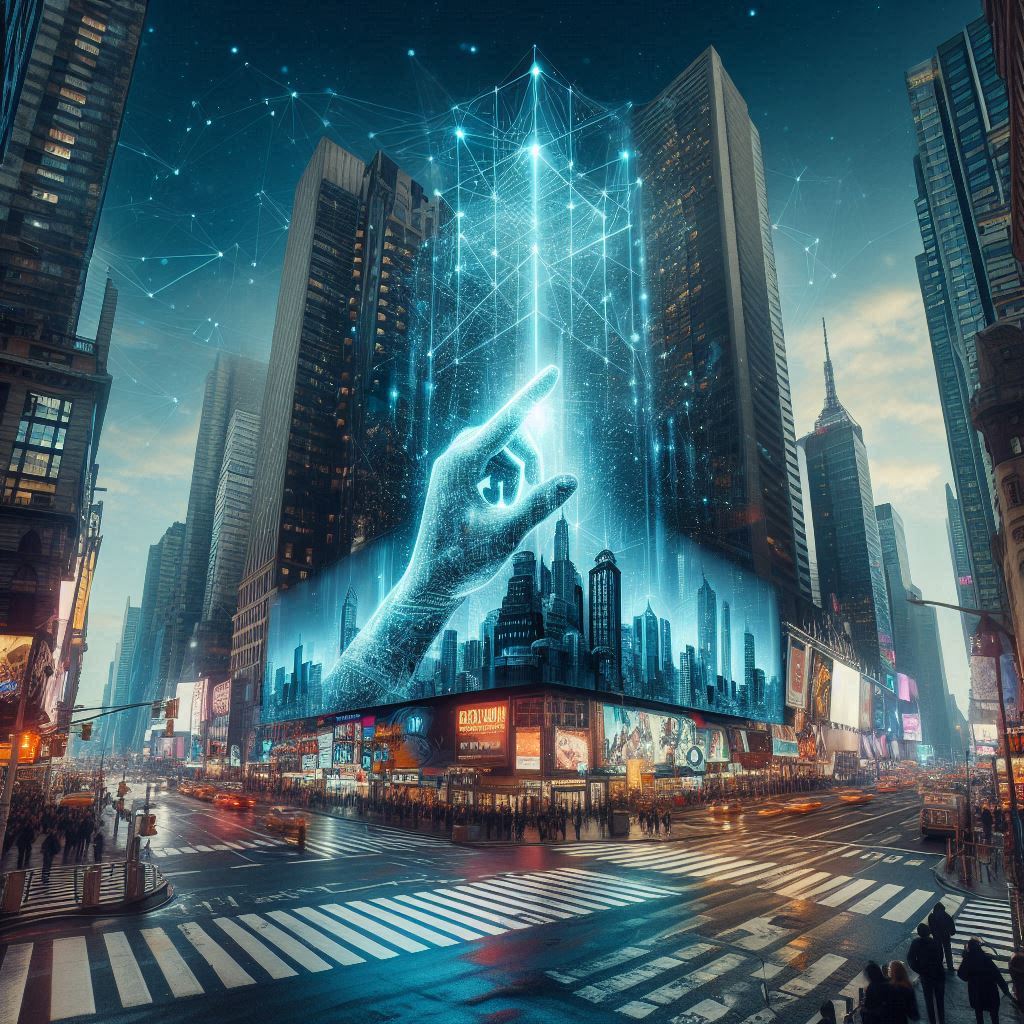
The landscape of outdoor advertising is continuously evolving, with 3D digital billboards at the forefront of innovation. Here are some key trends currently shaping the future of 3D digital billboard advertising:
- The Growing Adoption of 3D Digital Billboards by Advertisers: More and more advertisers are recognizing the benefits of 3D digital billboards, such as increased engagement and the ability to deliver dynamic, attention-grabbing content. This growing adoption is driven by the demand for more innovative and interactive advertising solutions that stand out in a crowded media landscape.
- Innovations in Cost-Effective 3D Billboard Technologies: Technological advancements are making 3D billboards more cost-effective. Innovations such as improved LED technology, energy-efficient designs, and modular systems that are easier to install and maintain are reducing the costs associated with 3D digital billboards, making them accessible to a broader range of businesses.
- Integrating VR and AR for Interactive 3D Billboard Experiences: Virtual Reality (VR) and Augmented Reality (AR) are being integrated into 3D billboard designs to create even more immersive experiences. These technologies allow advertisers to engage audiences in novel ways, from interactive games to virtual tours, enhancing the interactive aspect of digital billboards and deepening consumer engagement.
- AI’s Impact on Personalizing and Enhancing 3D Billboard Content: Artificial Intelligence (AI) is playing a significant role in personalizing and enhancing billboard content. AI can analyze data from cameras or sensors to adapt advertising content in real-time based on viewer demographics or behaviors, thus increasing the relevance and effectiveness of campaigns.
- Anticipating the Next Advances in 3D Billboard Technology: As technology continues to advance, future developments in 3D digital billboard technology are expected to include higher resolution displays, better 3D effects without the need for special glasses, and more seamless integration with urban environments. These advances will continue to enhance the visual appeal and effectiveness of billboard advertising.
- Sustainable Development in 3D Digital Billboard Operations: Sustainability is becoming increasingly important in digital advertising. Advances in energy-efficient technologies and the use of recycled materials are making 3D digital billboards more environmentally friendly. Additionally, digital platforms allow for the reduction of waste associated with traditional printed billboards, contributing to more sustainable advertising practices.
These trends highlight the dynamic nature of 3D digital billboard advertising and its potential to transform how businesses connect with their audiences in public spaces. As these technologies evolve, they promise to offer even more creative and engaging ways to capture consumer attention and deliver impactful advertising messages.
What is a 3D digital billboard? FAQs:
What is a 3D billboard?
A 3D billboard is an advanced digital billboard that uses technologies such as high-resolution LEDs, projection, and sometimes lenticular printing to create the illusion of depth and movement, enhancing viewer engagement through video and animation.
How do 3D billboards differ from traditional billboards?
Unlike traditional billboards, 3D billboards can display dynamic video content with visual depth, which can change based on data like audience reactions, making them more interactive and engaging.
Are 3D billboards more expensive than traditional billboards?
Yes, 3D billboards generally involve higher initial investments and maintenance costs due to their sophisticated technology and dynamic content needs.
How much does a 3D billboard cost?
The cost of a 3D billboard can vary widely depending on the size, technology used, and location. Basic installations can start from $10,000, with more sophisticated setups costing several hundred thousand dollars.
How to make a 3D billboard?
Creating a 3D billboard involves several steps:
- Designing engaging 3D content using graphic design software.
- Selecting appropriate hardware such as high-definition LED panels and sensors.
- Integrating software that can render 3D visuals and possibly interact with the environment or audience.
- Installing the physical structure in a location that maximizes visibility and viewer interaction.
What are the benefits of 3D billboards?
The benefits include higher engagement and retention rates, the ability to display dynamic and changing content, and enhanced brand recognition due to the unique and memorable nature of 3D advertisements.
Where is the 3D billboard located?
3D billboards are often located in high-traffic urban areas such as Times Square in New York City, Piccadilly Circus in London, or Shibuya Crossing in Tokyo to maximize their visibility and impact.
What are 3D billboards called?
3D billboards are often referred to as 3D digital billboards or stereoscopic billboards, highlighting their ability to display images with the illusion of depth.
How Do 3D Digital Billboards Work? an Article by Nicole Delgado 2024 | CMO | Explainer Video Company | Animated Explainer Videos




